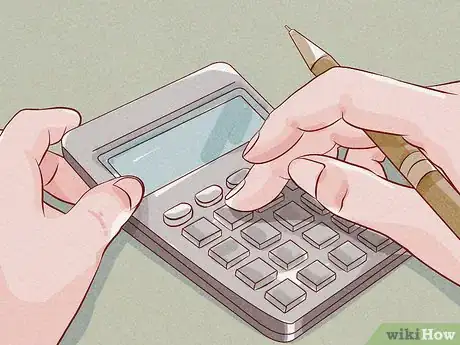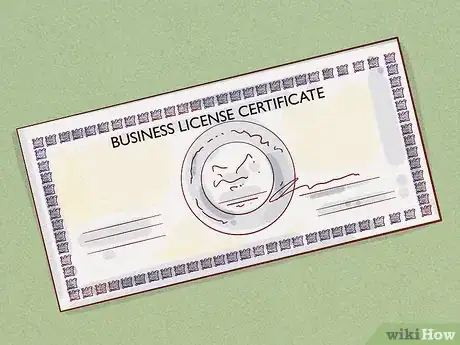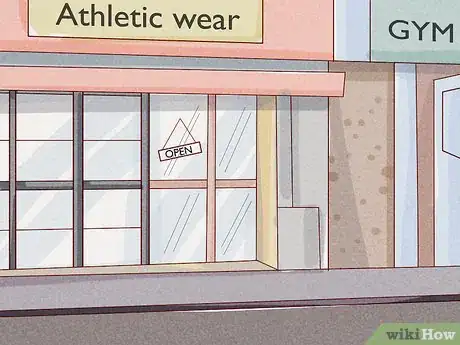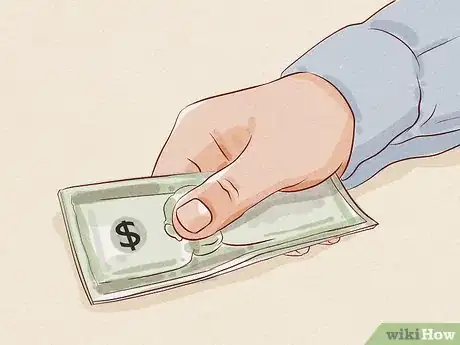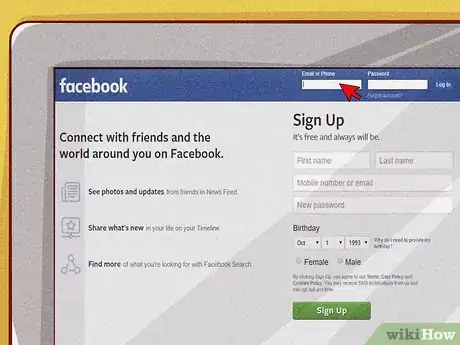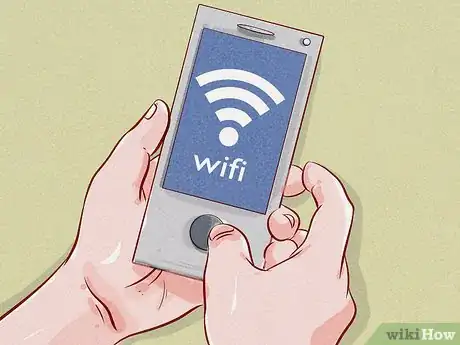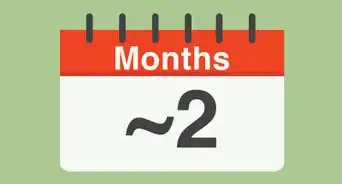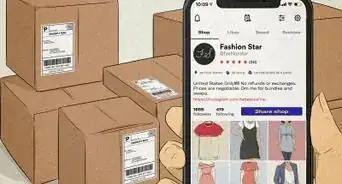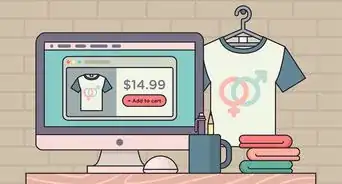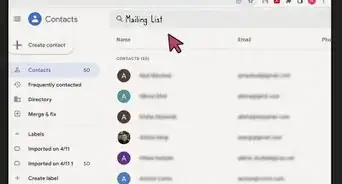This article was co-authored by Art Lewin. Art Lewin is an Entrepreneur based in Los Angeles, California. He specializes in business, sales, marketing, and real estate investing. Art is the CEO and Founder of four companies based in Los Angeles: Art Lewin Bespoke, Healthy Choice Labs, SFR Properties, and Professional Business Network (PBN). Art is known globally for his exclusive custom-made and ready-to-wear business wear designs. Some of his notable clients include royal family members, politicians, and Hollywood stars including Hugh Hefner, Sylvester Stallone, Johnny Carson, Steve Allen, and William Shatner.
There are 18 references cited in this article, which can be found at the bottom of the page.
wikiHow marks an article as reader-approved once it receives enough positive feedback. This article has 14 testimonials from our readers, earning it our reader-approved status.
This article has been viewed 444,742 times.
When it comes to starting a clothing retail store, planning and preparation are key. You need to develop a solid business plan, find a great location to set up shop, and gather the right inventory at the right price. While it can feel overwhelming to get started, you can form a gameplan to successfully start your business.
Steps
Brainstorming to Get Started
-
1Write down your goals for your business. A great way to get started is to grab a pen and paper and jot down what you hope to accomplish with your clothing retail business. This will help you organize your thoughts and nail down your ultimate goals with the business.[1]
- Defining your goals from the start can help you stay focused on them.
- For example, you may have a goal to have 10 locations within the next 10 years. Or, you may want to create a single, sustainable storefront.
-
2Select a clothing style or type that you want to sell. Before you open a clothing store, you need to know what kind of clothing you're going to sell! You can go with a men's, women's, or children's clothing store, or a combination of these categories.[2] You could also choose to sell specialty clothing, like vintage clothing, sportswear, or another specific category.[3]
- Add your decision to your written goals.
- Use the skills and knowledge that you already have. For instance, if you've worked in women's clothing retail, you can use your experience in your new business.
Tip: Conduct market research to identify whether or not your market would support a certain type of clothing. For example, your area may be in need of a new men's clothing store.
Advertisement -
3Create a name for your business. A good name for your business can help you define your goals and motivate you to start your store. The name is also the first thing that your future customers will see, so it's important that your business makes a good first impression.[4]
- Come up with a good working name while you're planning your business. The name could always be changed later in the process if you think of a better one.
- The name of your business is a major part of the identity of your brand, so give it the time and attention it deserves.
- Be sure to check that the name you choose isn't being used by somebody else already!
-
4Come up with a marketing strategy for your business. Describe how you plan to catch the attention of potential customers and get them to purchase clothing from your store.[5] Write out how you plan to convince customers that your clothes are better than competitors. A good marketing plan will help guide your marketing decisions and will help convince potential investors that you've done your research and you have an effective strategy.[6]
- Discuss the role that social media will play in your marketing strategy.
- Talk about the need for your business in the market.
- For instance, if you sell clothing aimed at women over 40, you may want to take out ad space in a local newspaper or magazine that is mainly read or viewed by that demographic.
Establishing Your Business
-
1Put together a business plan to attract investors. The plan should include a description of your business, market research for your store, and a list of the resources you need to get the business started. If you plan to apply for a loan or seek investors to start your business, a well-developed business plan can be a great tool.[7]
- Think about what investors would want to know about your business and include it in your plan.
- Prepare answers for questions that you can expect to be asked. For example, it's likely that a loan officer will ask you what you plan to sell and how you expect to turn a profit. Be ready to answer any questions they may have.
- A good business plan can also be used to seek business partners.
-
2Pitch your business idea to secure startup costs. Use your business plan to pitch your idea to venture capitalists, the Small Business Administration, a loan officer at a bank, or any other potential investors. Make sure you specify how much funding you need and how you plan to spend the money.[8]
- Break down the cost of rent, inventory, staff, marketing, or any other expenses you plan to incur.
- Apply for a small business loan from the SBA or from the bank.
-
3Select an LLC, partnership, or sole proprietor legal structure. In order to start a clothing retail store business, you need to register your business, get a tax ID number, and file for any licenses or permits that you may need. But before you can do any of that, you need to choose a business structure.[9]
- A sole proprietorship business gives you complete control of your business, but it means your business assets and liabilities are not separate from your personal assets and liabilities. This model is a good choice for a low-risk business or if you want to test your business idea.
- A partnership structure is a simple structure for 2 or more people to own a business together.
- A limited liability company, or LLC, protects you from personal liability and lets you take advantage of both the corporation and partnership structures.
- Consult with a business counselor, accountant, or lawyer to help you choose the best business structure for you.
- If you're in the US, you can incorporate your business yourself online by visiting the Small Business Administrations website at https://www.sba.gov/.
-
4Get the necessary licenses and permits to operate your business. Your local government will require you to register your business and obtain certain licenses and permits in order for you to start your store. The requirements can vary from location to location so contact your local government to find out what licenses and permits you need and how you can apply to get them.[10]
- If you're in the US, every state will require you to register your business with them and will have different permits that you need to secure. There are also Federal business licenses and permits you need to apply for.
-
5Draft company policies for employees and customers. Include disciplinary policies, policies regarding cell phone or electronic device usage, and safety policies that they need to follow. You also need to define your company policy regarding refunds and returns, or late payments so employees and customers are clear about them.[11]
- Before you hire employees, you need to have a document that clearly lays out your company policies.
-
6Post an ad to hire employees. Local newspaper classifieds and a sign outside of the business saying “Help Wanted” are great ways to find local employees. You can also post to online classified sites like Craigslist, or even post to your business page on Facebook saying that you're hiring.
- Set up a Craigslist account to post a job listing as well.
-
7Set up a cloud-based point of sale system with a tablet. You can easily set up a point of sale system by downloading an application, using a card-reader attachment in the headphone jack, and completing transactions with your tablet.[12] The app will keep track of all of your sales, taxes, and allows you to run reports so you can track your finances.[13]
- Cloud-based POS systems must be connected to the internet in order to function.
- Popular cloud-based POS systems include Square, PayPal, and Clover.
Choosing a Storefront Location
-
1Look for areas with lots of foot traffic. When you're out scouting for a potential storefront, pay attention to the amount of foot traffic the area gets. A store in a strip mall, shopping center, or even a stand-alone location needs lots of people who will walk through the area and peruse the clothes you're selling.[14]
- Consider leasing a store in a shopping mall, which will have lots of foot traffic.
-
2Check to see if you can see the storefront from the road. If your store is easy for lots of people to see, then you're more likely to have people check out your store. You can also save on advertising costs and promotions. Look for a location that people can easily see from the street or when they walk through the area.[15]
- Look for strip malls that have a large sign for you to display your business.
-
3Select a storefront in an area that your target demographic frequents. When you're considering a location, look at the people who frequent the neighboring stores and who inhabit the area.[16] You want to have a consumer base that is interested in your clothing and can afford it.[17]
- For example, if you plan to sell athletic wear, look for an area with lots of active-looking people or a gym located nearby.
-
4Research the safety and security of the locations you scout. You want to choose a location that is safe for both yourself and your customers. Ask the owner about any previous break-ins and check the crime statistics of the area. You don't want to set up your business in an area that has the potential for theft.[18]
- Ask any neighboring business owners if there have been any security or safety problems in the past.
Tip: Use a crime mapping service like LexisNexis Community Crime Map or CrimeMapping.com to look up the crime statistics of an area and the history of any buildings you're considering.
-
5Look for locations with rents that you can afford. You don't want to spend all of your budget on rent or you may not have enough capital to invest in inventory, design, or advertising.[19] You also need to consider utility bills, maintenance fees, taxes, and the costs of any remodeling that you plan to do.[20]
- A good rule of thumb is to keep rent at about 5-6% of your total sales. So if you sell $100,000 of merchandise a month, you should have a rent amount of $5,000.
Getting Inventory
-
1Contact wholesale vendors who carry clothing that you want to sell. Look online for wholesale clothing suppliers that carry items that you're interested in selling at your store. Call or email them to say that you're interested in buying from them wholesale to sell in your store.[21] They may have specific prices for people who plan to sell their inventory in a store.[22]
- Look at overseas companies for cheaper inventory, but be careful because the products could be low-quality.
-
2Go to trade shows to buy wholesale merchandise for your store. You can meet and network with wholesale clothing business and start a working relationship with them. You'll be able to see their products first-hand to check their quality.[23]
- You can also make a wholesale purchase at trade shows.
- Check online for trade shows in your area.
-
3Price your inventory to be affordable but also turn a profit. You need to determine how much to mark-up an item. Research similar clothing item prices and what other businesses are charging for them. You want to find a balance with pricing your clothing so people will want to buy it but also allow you to pay the bills and make money.[24]
- Calculate the overhead costs of your business to help you decide your pricing models.
- Look at how competitors discount their merchandise as well so you can emulate their model.
- Clothing industry markups are generally around 55%. So if you buy a shirt for $20, you would sell it for $31 to earn a profit.
-
4Create a checkout station for your cashiers. You'll need a desk or counter for your point of sale system and an employee to operate it. It will also be the area where your customers will stand in line to pay for their merchandise.[25]
- You may want to have a separate station that is strictly for returns, refunds, or customer service.
- Use ropes, racks, or even tables with merchandise on them to create lanes for customers to line up in.
- Keep impulse buys like candy or small items like socks or jewelry near the checkout area.
- Be sure to make the area wheelchair accessible for any customers with a disability.[26]
-
5Set up mannequins, display racks, and seating for customers. Mannequins allow you to show your customers how an item looks when it's worn. Display racks allow your customers to view multiple items quickly. You also want to have some comfortable benches or couches so your customers can relax while they shop.[27]
- People need to be able to peruse your merchandise easily and decide whether or not they like an item quickly.
- The more comfortable your customers are, the more time they are likely to spend in your store.
-
6Arrange your inventory in your store so it catches people's attention. Aesthetic is very important in a retail clothing store. Make your inventory visible and appealing by arranging it on displays and mannequins in a way that is visually appealing. Try color coordinating items or arranging like items with one another.[28]
- Lay out the floor plan in a way that allows customers to move around easily so they peruse more of your inventory.
Tip: Bundle items on display tables or kiosks to encourage cross-purchasing and increase your sales. For instance, if you're selling a blazer, display it on a mannequin with pants, shoes, a belt, and other items that match it.
Marketing Your Store
-
1Create a website for your store. A clean, professional-looking website will work wonders for your business. You can use it to promote products or sales to get people into your store.[29]
- Use a domain provider like GoDaddy or Domain.com to secure a web address that matches your business.
- Design your website so it's visually appealing and matches the clothing that you sell. For example, if you sell baby clothes, design your website so it's fun and cute with bright colors and smiling babies.[30]
Tip: Hire a web developer to create your website for the best results.
-
2Set up social media accounts for your business. Social media is an integral part of marketing your business and products. You can use social media to advertise a sale or a new item. You can also add a link to direct visitors to your website to increase your website's traffic.[31]
- Use fun content to increase engagement. A silly quote or a good-looking graphic can catch people's attention and drive them to your store.
- Start an Instagram for your business to share photos of your inventory and to advertise sales.
- Create a Facebook page for your store to share content that will increase engagement and make people aware of your business.
-
3Use digital marketing to promote your business. Create and share marketing content, advertise new products and sales, and use email marketing campaigns to reach new customers. The internet is a useful tool for you to use to market your clothing store, and much of it doesn't cost anything but the time you put into it.[32]
- Use search engine optimization to help your website appear in more search engine results.
- Develop and create content marketing to increase engagement and reach more potential customers.
- Create a targetted email marketing campaign to promote brand awareness, reach out to past customers, and attract new customers.
Expert Q&A
-
QuestionHow can I sell clothes fast?
 Art LewinArt Lewin is an Entrepreneur based in Los Angeles, California. He specializes in business, sales, marketing, and real estate investing. Art is the CEO and Founder of four companies based in Los Angeles: Art Lewin Bespoke, Healthy Choice Labs, SFR Properties, and Professional Business Network (PBN). Art is known globally for his exclusive custom-made and ready-to-wear business wear designs. Some of his notable clients include royal family members, politicians, and Hollywood stars including Hugh Hefner, Sylvester Stallone, Johnny Carson, Steve Allen, and William Shatner.
Art LewinArt Lewin is an Entrepreneur based in Los Angeles, California. He specializes in business, sales, marketing, and real estate investing. Art is the CEO and Founder of four companies based in Los Angeles: Art Lewin Bespoke, Healthy Choice Labs, SFR Properties, and Professional Business Network (PBN). Art is known globally for his exclusive custom-made and ready-to-wear business wear designs. Some of his notable clients include royal family members, politicians, and Hollywood stars including Hugh Hefner, Sylvester Stallone, Johnny Carson, Steve Allen, and William Shatner.
Entrepreneur When you first open up at a new location, send an email blast to all the top-end executives within a mile (1.6 km) radius of your store. You can also reach out through direct mail.
When you first open up at a new location, send an email blast to all the top-end executives within a mile (1.6 km) radius of your store. You can also reach out through direct mail. -
QuestionHow can you make a living with a clothing line?
 Art LewinArt Lewin is an Entrepreneur based in Los Angeles, California. He specializes in business, sales, marketing, and real estate investing. Art is the CEO and Founder of four companies based in Los Angeles: Art Lewin Bespoke, Healthy Choice Labs, SFR Properties, and Professional Business Network (PBN). Art is known globally for his exclusive custom-made and ready-to-wear business wear designs. Some of his notable clients include royal family members, politicians, and Hollywood stars including Hugh Hefner, Sylvester Stallone, Johnny Carson, Steve Allen, and William Shatner.
Art LewinArt Lewin is an Entrepreneur based in Los Angeles, California. He specializes in business, sales, marketing, and real estate investing. Art is the CEO and Founder of four companies based in Los Angeles: Art Lewin Bespoke, Healthy Choice Labs, SFR Properties, and Professional Business Network (PBN). Art is known globally for his exclusive custom-made and ready-to-wear business wear designs. Some of his notable clients include royal family members, politicians, and Hollywood stars including Hugh Hefner, Sylvester Stallone, Johnny Carson, Steve Allen, and William Shatner.
Entrepreneur Start by making the most popular clothing items instead of making every garment at once. Pre-production costs a lot of money, so building your way up is a good way to save money.
Start by making the most popular clothing items instead of making every garment at once. Pre-production costs a lot of money, so building your way up is a good way to save money. -
QuestionWhere is cloth available for wholesale?
 Community AnswerYou can look up specific wholesale marketplaces in your geographic region.
Community AnswerYou can look up specific wholesale marketplaces in your geographic region.
References
- ↑ https://www.inc.com/michael-olguin/4-reasons-you-need-to-set-business-goals.html
- ↑ Art Lewin. Entrepreneur. Expert Interview. 11 June 2021.
- ↑ https://www.business.com/articles/how-to-start-a-clothing-store/
- ↑ https://www.inc.com/adam-fridman/why-your-company-name-is-as-important-as-your-company-function-adam.html
- ↑ Art Lewin. Entrepreneur. Expert Interview. 11 June 2021.
- ↑ https://www.entrepreneur.com/article/43026
- ↑ https://www.entrepreneur.com/article/83818
- ↑ https://www.sba.gov/business-guide/plan-your-business/write-your-business-plan
- ↑ https://www.sba.gov/business-guide/launch-your-business/choose-business-structure
- ↑ https://www.sba.gov/business-guide/launch-your-business/apply-licenses-permits
- ↑ https://www.inc.com/john-boitnott/6-policies-your-small-business-should-put-in-writing-today.html
- ↑ Art Lewin. Entrepreneur. Expert Interview. 11 June 2021.
- ↑ https://www.businessnewsdaily.com/10970-how-to-set-up-a-pos-system.html
- ↑ https://www.business.com/articles/how-to-start-a-clothing-store/
- ↑ https://www.business.com/articles/how-to-start-a-clothing-store/
- ↑ Art Lewin. Entrepreneur. Expert Interview. 11 June 2021.
- ↑ https://www.business.com/articles/how-to-start-a-clothing-store/
- ↑ https://www.entrepreneur.com/article/37944
- ↑ Art Lewin. Entrepreneur. Expert Interview. 11 June 2021.
- ↑ https://www.entrepreneur.com/article/37944
- ↑ Art Lewin. Entrepreneur. Expert Interview. 11 June 2021.
- ↑ https://youtu.be/7hhpMK8KOvY?t=184
- ↑ https://youtu.be/7hhpMK8KOvY?t=130
- ↑ https://www.business.com/articles/how-to-start-a-clothing-store/
- ↑ https://fitsmallbusiness.com/cash-wraps/
- ↑ https://www.ada.gov/reachingout/salesservice.html
- ↑ https://bizfluent.com/how-2273556-display-merchandise-clothing-store.html
- ↑ https://bizfluent.com/how-2273556-display-merchandise-clothing-store.html
- ↑ https://www.forbes.com/sites/nicoleleinbachreyhle/2014/09/29/websites-for-small-businesses/
- ↑ Art Lewin. Entrepreneur. Expert Interview. 11 June 2021.
- ↑ https://www.business.com/articles/how-to-start-a-clothing-store/
- ↑ https://www.entrepreneur.com/article/37944
About This Article
To start a clothing retail store business, first choose a niche, such as vintage clothing, sportswear, or women’s clothes. Once you know what kind of product you’ll sell, register an attractive brand name and secure a retail license. You’ll also need to write a business plan to set your goals and help you get investment if you need it. After you’ve secured the necessary capital, purchase a store in an area with high foot traffic and little competition so customers will easily find you. Then, buy your initial inventory from wholesale vendors or trade shows. Price your products so that they’re competitive but also allow you to make enough profit to cover your expenses. For example, if you buy a shirt for 20 dollars, sell it for around 30 dollars. For more tips, including how to market your retail store on the internet, read on!






